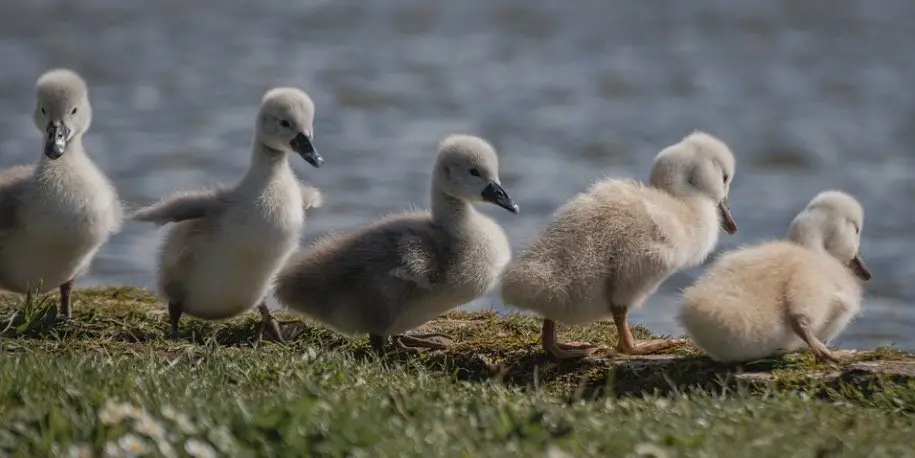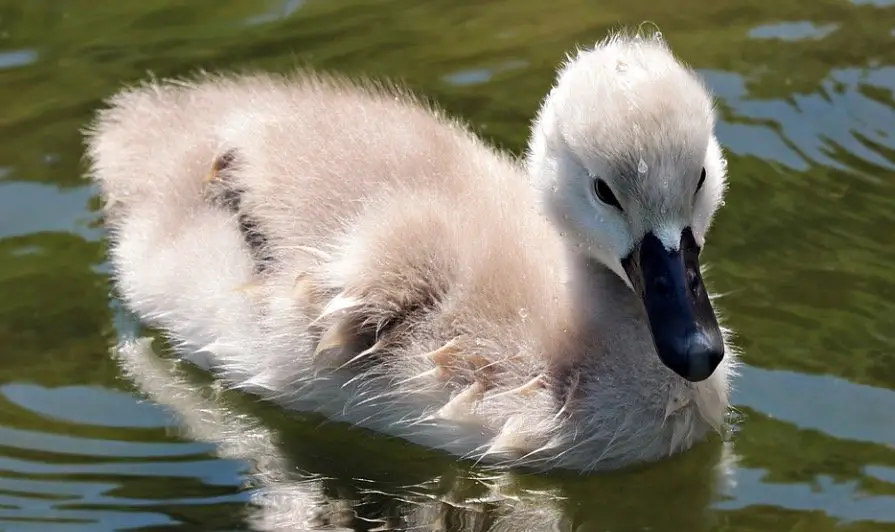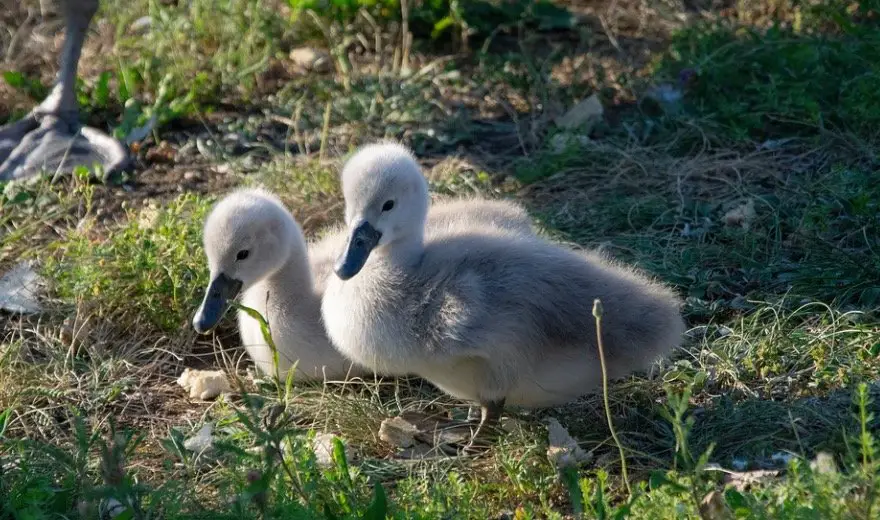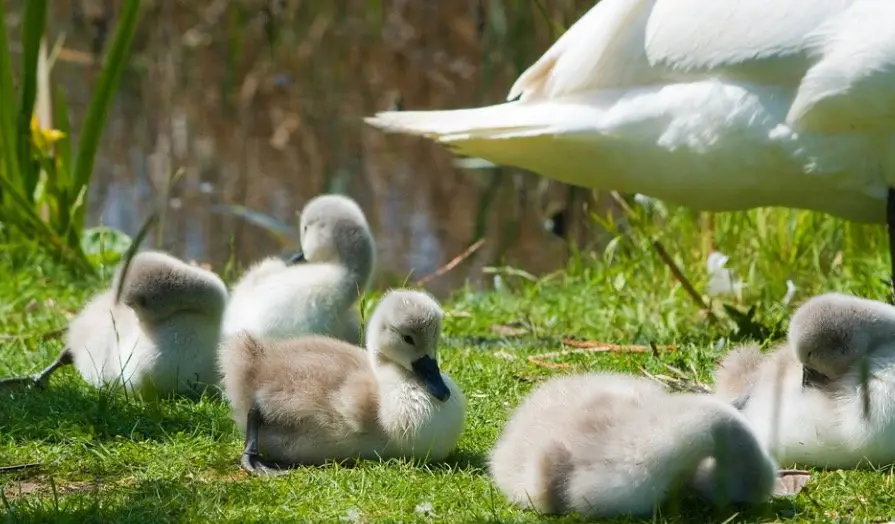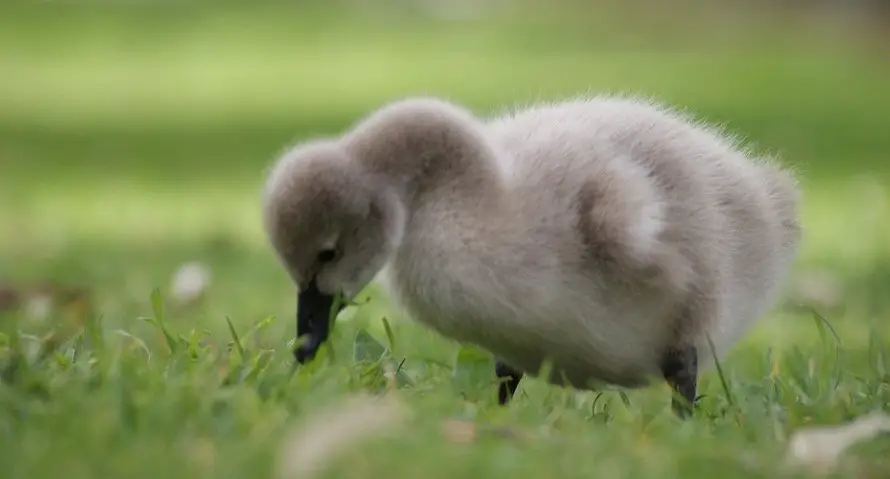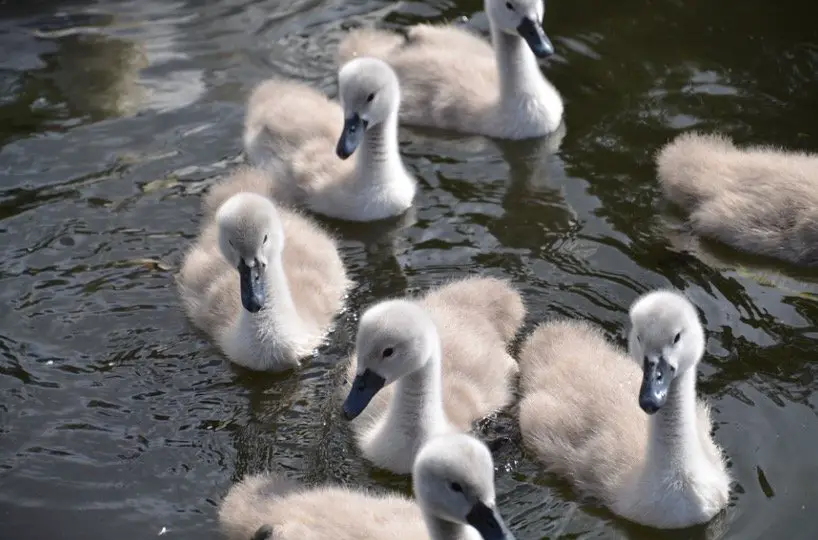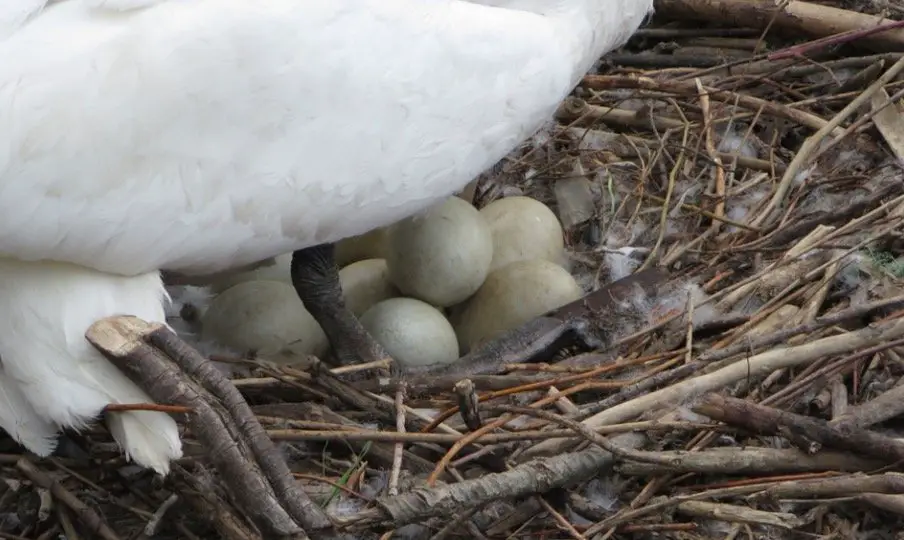Baby Swans: Description, Types, Pictures, & Fun Facts
What Does a Baby Swan Look Like?
Baby swans, known as cygnets, are born with down-covered feathers. Parents watch after their newborns closely, even though they can already run and swim after just a few hours of instruction.
When they’re young, swans have a distinctive gray-black beak and a thick, fluffy coat. Small, black feet complete the look. Because all cygnets seem the same in this picture, it’s hard to identify the young of different species differently.
Any species of swan with a dusky gray cygnet, such as the Australian Black swan, may be found in the land down under.
Baby Birding Food: A Complete Guide
All-white cygnets are known as “Polish swan” cygnets because of their unique look, To my knowledge, this only affects Mute swans.
How Big is a Baby Swan?
At around 8 inches in length, they weigh about 250 grams (8.8 oz). In terms of newborn ducks, they are the largest. For the first six months of their lives, they grow around 6 kilograms and reach their maximum weight of 14 kilograms in three to four years.
As one of the largest flying birds in the world, the trumpeter swan is a colossal creature. Putting a cygnet and a duckling next to each other makes it clear how much larger they are. Swan egg weight is around 350 grams.
How Much do Baby Swans Weigh?
Swan chicks may weigh up to 250 grams when they are only a few days old (8.8 ounces). On the other hand, a mallard duckling, on the other hand, may only weigh about 50 grams.
What Do Juvenile Swans Look Like?
The hue of young swans progressively changes from a grayish-brown to a buffy-white at the age of one year. Even though they will continue to have “dirty” gray feathers for at least another year, swans begin to become white after one year of age.
Baby Birds: All the Facts, Care, and Pictures
For Mute Swans, the beak of an immature bird is pinkish before becoming orange as it matures (Trumpeters have black bills). The frontal knob on the beak of a swan is commonly lacking in young birds as early as six months old.
Even as juveniles, swans are massive birds, and by the time they’re four years old, they’ve already reached adult dimensions.
What is a Baby Swan Called?
It is from the French word “cigne” that the term “cygnets” is derived, which meaning “swan.” The term “cygnus” has its roots in the Latin word “cygnus.”
To avoid confusion, the term cygnet is not to be confused with the term signet, which refers to an item of jewelry that has the letters of the alphabet inscribed on it.
What is a Group of Baby Swans Called?
There is no unique term for having a big number of baby swans. Young swans are seen in groups with their parents when they are only a few weeks old. Younger swans typically form their own little flocks within their sibling groups, which are made up of both older and younger swans.
What Do Baby Swans Eat?
There are a substantial number of macro and micro nutrients found in the yolk of swan eggs, which hatchling consume as they grow. As a result, newborn cygnets may spend up to a week or more without sustenance.
Baby Pigeons: All The Facts, Care, And Pictures
Their survival depends on how much yolk they take from the egg at this vital time. Within a week after their birth, swan babies can feed themselves.
They’ll sift through the water looking for small critters and consume delicate aquatic plants like duckweed in the process.
How do Swans Feed Their Chicks?
Swan parents have been seen indirectly feeding their young. Aquatic vegetation may be removed from the water and allowed to rise to the surface, where cygnets can devour it. This is one method they use.
Paddling aggressively is another approach to remove food-rich debris from the waterbed. The chicks will also have to forage for their own food, so this won’t last long.
How Many Eggs do Swans Lay?
However, some swans have been known to produce as many as fourteen eggs. The female will deposit an egg on average every one to two days between the end of March and the beginning of April (though this varies with the species of swan and location). In order for swan eggs to survive, they tend to be large in number.
What do Swan Eggs Look Like?
A swan egg is around 10 to 12.6 cm (4 to 5 in) long and 6 to 8 cm wide (2.4 to 3.2in). Swan egg is stony-looking white with a blue hue.
How Long do Swan Eggs Take to Hatch?
Swan eggs hatch in 24 to 48 hours after 35 to 41 days of incubation.
When do Swans Lay Eggs?
Swans lay eggs in the Northern Hemisphere between the end of April and the beginning of June. Black swans in Australia mate throughout the most of the year, except February through September, when they do not mate.
How Many Baby Swans Survive in the Months After Hatching?
The mortality rate of cygnets is around 50%, with an additional 25% predicted to die before maturation. Some survivors might expect to survive for at least 20 years. It’s not uncommon for cygnets to die from predators and illnesses.
Baby Owl: All The Facts, Care, and Pictures
Early-season cygnets have a greater probability of survival than late-season cygnets. Prior to laying their eggs, more experienced swan couples often do it earlier in the year. Despite the loss of a brood as a consequence of a swan’s blunders, it will improve in the future.
When can Baby Swans Fly?
Within three to four months after hatching, cygnets are frequently ready to fly on their own. If something goes wrong, they’ll be able to swim across the lake in a matter of minutes!
It has been shown that the behavior of newborn swans is very similar to that of their parents, who position them near the water on a small “runway.” Because it’s the beginning of the cygnet’s separation from her family, this is a momentous occasion.
When do Baby Swans Leave Their Nests?
The young leave their nests after a few days and stay close to their parents for at least four or five months. Swan chicks often travel with their parents on their backs, particularly when the flock is traveling across an area occupied by other swans.
Baby Penguins: All The Facts, Care, and Pictures
Cygnets are well-protected, and their parents are continually on the watch for other swans that may harm them in the early stages of their lives.
Swans have been known to attack humans and other animals in their territorial defence, despite the myth that they can break an arm with their wings.
Do Swans Reuse Nests?
Swans are known to return to their nests throughout the breeding season, when they repair and enhance their nests. A successful and healthy brood is particularly important in the case of swan parents.
Swans, who are intelligent birds with excellent memory and recall, may remember safe nesting places and return there if it is practicable to do so again.
How Long do Baby Swans Stay With Their Parents?
In late autumn or early winter of the same year, cygnets will be ready to fend for themselves. In the spring of the next year, which is around 8 to 12 months, it is more likely that they will.
Baby Eagle: All The Facts, Care, and Pictures
Parents frequently resort to unpleasant measures like kicking and stomping on their chicks when they’re ready to leave the nest. Of course, this is to ensure that the cygnet grows up.
When do Baby Swans Join Flocks?
Swan babies are usually with their parents for little more than a year before they are ready to leave. By that time, the swan should be able to fly on its own, and its parents will urge it to do so as quickly as possible.
Young swans, whether they remain with their parents, are likely to join a nearby group after leaving their nest. No matter where its parents take it, the baby swan will be OK on its own.
Swans spend the winter together before returning to their breeding couples for the next mating season.
When do Juvenile Swans Start Breeding?
When they’re two years old, swans begin looking for a mate in quest of companionship. Only the most agile birds are able to successfully breed. At the beginning of the mating season, young swans will begin searching for mates. Unmarried couples may learn from married couples’ lavish demonstrations of affection.
Where do Baby Swans Go at Water?
A young swan stays in the nest for two to three days after birth and sleeps on its mother’s silky down. After that, swans nearly always lay their heads in the water, where they are safer from predators such as foxes than they are on the ground. It is common for newborn swans to sleep on their parents until they are big enough to do so.
